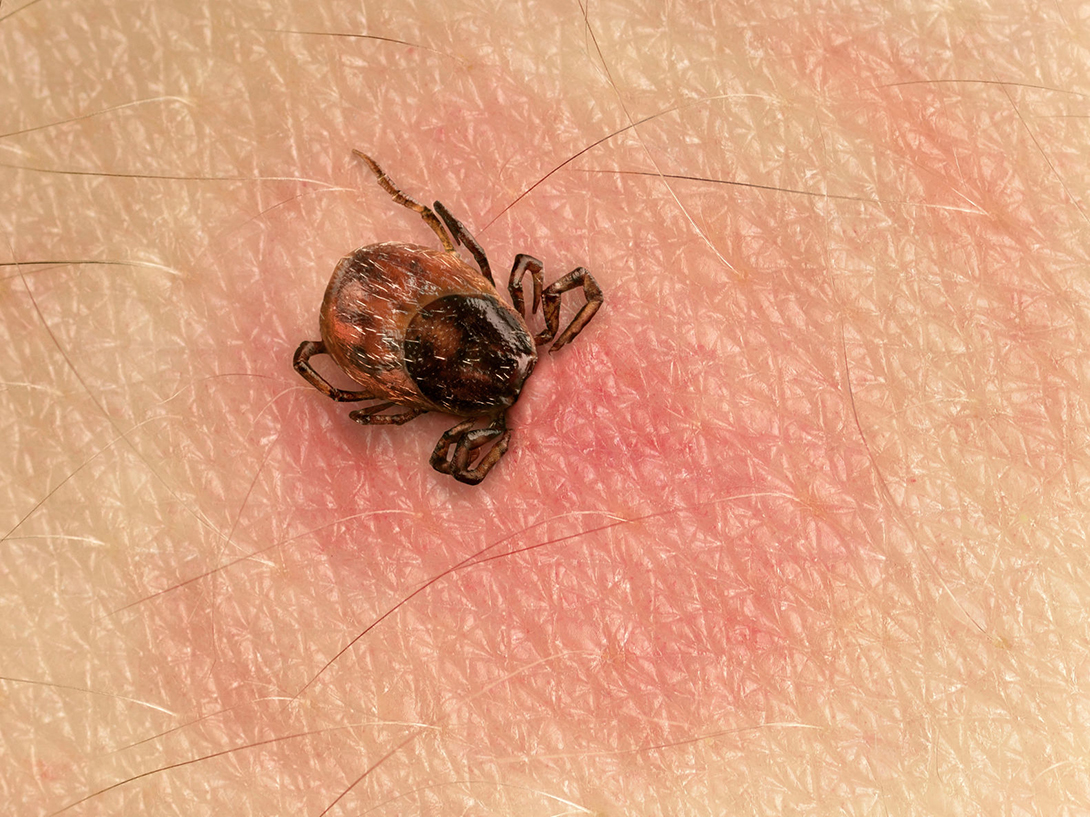Exposure Risk: Outdoor Workers and Tick-Borne Illnesses
If you work anywhere that takes you near wildlife or even outside regularly, you might be at risk of being bitten by a deer tick (Ixodes scapularis), which most Californians know by now can carry Lyme disease. This zoonotic bacterial illness, caused by Borrelia burgdorferi, is known for being difficult to diagnose and can cause debilitating symptoms that reduce the quality of life for many who go for months or even years before they finally figure out what is making them feel so terrible.
Lyme Disease: The Infection and Its Complications
According to Harvard Health Publishing, a specific antibiotic regimen cures Lyme disease in most people. However, it also isn’t uncommon for patients to continue exhibiting symptoms of Lyme disease even after taking antibiotics for months. This is known in the medical community as Post-Treatment Lyme Disease Syndrome (PTLDS).
PTLDS is distinct from chronic Lyme disease and may involve an autoimmune-like response or residual inflammation, even when Borrelia bacteria are no longer detectable in blood tests.
Further complicating diagnosis and treatment is the fact that the bacteria that cause Lyme may not be present in your blood tests after treatment, despite your symptoms still wreaking havoc on your health, job, and well-being. The emergence of PTLDS and many doctors’ differing opinions on Lyme disease detection and treatment has led to what some in the medical community call the Lyme wars, a long-standing debate between ILADS (International Lyme and Associated Diseases Society) and IDSA (Infectious Diseases Society of America) regarding testing accuracy and treatment duration.
Symptoms That Are Often Overlooked or Misdiagnosed
The vague, pervasive symptoms of PTLD include:
- General body aches and joint inflammation
- Chronic fatigue syndrome-like symptoms
- Brain fog and memory impairment
- Tingling or numbness in limbs
- Neurological complications (e.g., light sensitivity, vertigo)
- Heart palpitations or irregular heartbeat
All of these symptoms can be confused with other conditions such as multiple sclerosis, fibromyalgia, or autoimmune disorders. In some cases, symptoms may even be written off as “all in your head.”
Importance of Accurate Diagnosis in Legal and Medical Contexts
However, as you are also aware, it is important to get an accurate diagnosis to be eligible for workers’ compensation and to receive the proper treatment. Documenting tick exposure in an occupational setting and obtaining medical evaluation from a Lyme-literate doctor (LLMD) is crucial to building a solid legal case.
Workers at Highest Risk for Lyme Disease Exposure
- Park rangers, forest workers, and agricultural laborers
- Landscape and grounds maintenance staff
- Utility workers and surveyors
- Construction and road crew employees in wooded areas
These professions are routinely exposed to tick habitats, particularly in Northern California and the Sierra Nevada foothills.
Legal Implications: Workers’ Compensation and Long-Term Disability
In the state of California, Lyme disease can qualify as an occupational illness, but proving a work-related infection is complex. You’ll need:
- A medical diagnosis from a specialist familiar with PTLDS
- Detailed documentation of symptoms and exposure dates
- Worksite location and conditions
- Incident reports and employer communication
- Proof of missed work, reduced capacity, or long-term disability
The California Division of Workers’ Compensation (DWC) and Occupational Safety and Health Administration (OSHA) require certain reporting and filing deadlines; missing these could cost you your benefits.
Testing & Diagnosis Challenges: What You Need to Know
Standard blood tests such as ELISA and Western Blot often miss infections in the later stages. False negatives are common, especially in PTLDS. You may need:
- Repeat testing over time
- Advanced diagnostic panels
- Clinical diagnosis based on symptoms and exposure, not just lab results
Some LLMDs also use supportive diagnostics like CD57+ counts, C6 peptide ELISA, or PCR testing, which may aid in controversial cases.
How to Prevent Tick-Borne Infections on the Job
While legal and medical intervention is necessary after infection, prevention is your strongest defense:
- Use EPA-registered tick repellents (DEET or permethrin-treated clothing)
- Wear long sleeves, tuck pants into socks
- Shower and do full body checks after outdoor exposure
- Report tick bites immediately to your supervisor
- Keep records and photos of bites, symptoms, and treatment
Legal Representation Matters: We’re Here to Help
If you’re suffering from Lyme disease or PTLDS after workplace exposure, you don’t have to navigate the medical and legal system alone.
At Hussain & Gutierrez Law, we help injured and ill workers secure:
- Accurate and timely medical evaluations
- Full workers’ compensation benefits
- Protection from employer retaliation
- Legal appeals for denied claims
- Long-term disability and impairment rating support
Request a Free Case Evaluation → 888-997-3701
Frequently Asked Questions
What is the difference between Lyme disease and PTLDS?
Lyme disease is the initial bacterial infection caused by Borrelia burgdorferi. PTLDS refers to symptoms that persist after treatment, likely due to immune system dysfunction or residual inflammation.
Can you still have Lyme disease if your blood test is negative?
Yes. Standard tests often return false negatives, especially in chronic or late-stage cases. Clinical evaluation is essential.
Is Lyme disease covered under California workers’ compensation?
Yes, if you can prove the infection occurred during your employment. Documentation, medical diagnosis, and legal support are key.
What type of doctor treats chronic Lyme or PTLDS?
A Lyme-literate medical doctor (LLMD), often trained in both infectious disease and holistic approaches, is your best option for comprehensive evaluation and treatment.
How long do I have to file a workers’ comp claim for Lyme disease?
In California, you typically have one year from the date of injury or illness diagnosis to file. However, early reporting is strongly recommended.
Don’t Let Tick-Borne Illness Derail Your Life
Lyme disease and its long-term effects can severely impact your health, career, and future. If you’ve been exposed on the job, you have the right to medical treatment and legal compensation.
Contact Hussain & Gutierrez Law today for a free consultation, and let us help you reclaim your health and your rights.



